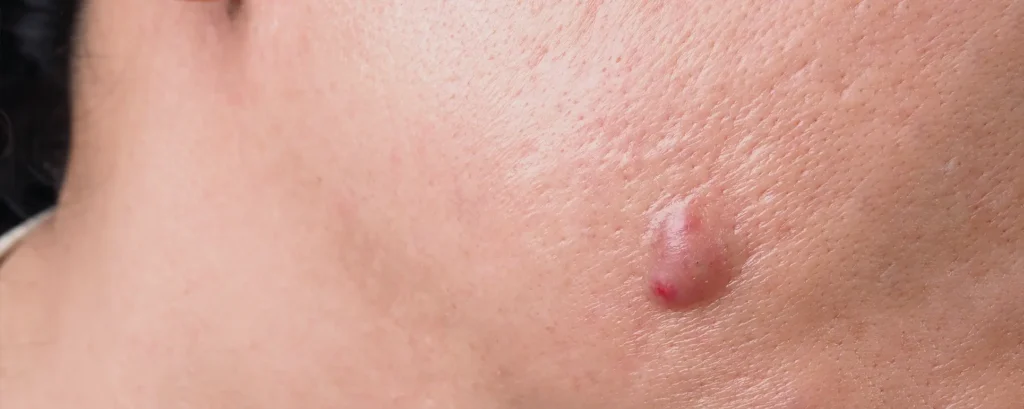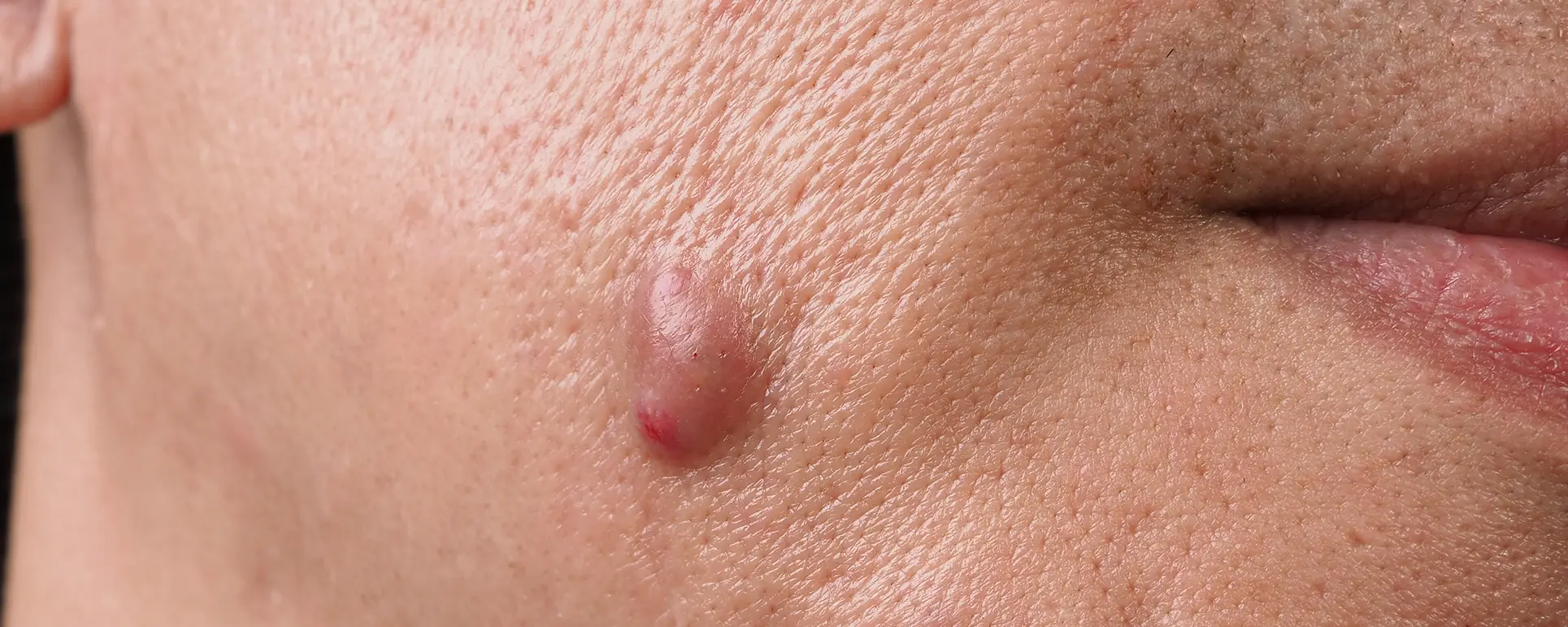Experiencing painful lumps under your skin can be both alarming and uncomfortable, often leaving you wondering what’s going on beneath the surface. These lumps can appear suddenly or develop gradually over time, and they may vary in size, texture, and tenderness. Some may feel firm and deep, almost like a marble under the skin, while others may be softer, swollen, or warm to the touch. Depending on the underlying cause, they can remain for just a few days or linger for weeks, sometimes even recurring in the same spot.
While some lumps are relatively harmless such as small cysts, blocked oil glands, or minor injuries others can be a sign of more serious issues. Infections, inflamed hair follicles, autoimmune reactions, or even certain skin conditions can lead to painful swelling under the skin. These lumps might also be accompanied by redness, heat, pus formation, or changes in the surrounding skin. In some cases, they can interfere with daily activities, cause significant discomfort, or signal that your body is fighting an internal problem.
Ignoring them in the hope they’ll disappear on their own can sometimes lead to complications, especially if they’re caused by an infection or chronic condition. That’s why understanding the possible causes, recognising warning signs, and seeking the right treatment early on is so important. A professional diagnosis can help determine whether the issue is minor and easily treatable or something that requires more in-depth medical attention.
In this article, we’ll take a closer look at the most common reasons for painful skin lumps, when you should be concerned, and how an experienced dermatologist in London can help. From accurate diagnosis to effective treatment options and practical prevention strategies, we’ll guide you through what you need to know to protect your skin and overall health.
1. Common Causes of Painful Lumps
Painful lumps under the skin can develop for a variety of reasons, and the exact cause often determines how they feel, how they behave, and the best way to treat them. Here are some of the most common causes explained in more detail:
1. Cysts
Cysts are closed, sac-like structures filled with fluid, semi-solid material, or other debris. They can develop just beneath the skin’s surface due to blocked pores, trapped keratin, or damage to the skin. While most cysts are harmless and slow-growing, they can become inflamed or infected, leading to redness, swelling, and pain. When infected, they may fill with pus and require drainage or medical treatment.
2. Boils (Furuncles)
Boils are painful, pus-filled bumps caused by bacterial infections most commonly Staphylococcus aureus that occur in hair follicles or oil glands. They often start as small, red, tender spots and gradually enlarge, becoming firm and swollen. Over time, the centre of the boil softens and develops a white or yellow tip that may rupture and drain. Boils can occur anywhere on the body but are common on the face, neck, armpits, thighs, and buttocks.
3. Blocked Oil Glands (Sebaceous Gland Blockage)
Sebaceous glands produce natural oils that keep the skin moisturised. When these glands become clogged with sebum, dead skin cells, or dirt, a lump may form under the skin. These blockages can cause localised swelling and discomfort, especially if they become inflamed or infected. In some cases, a sebaceous cyst may form as a result of the blockage.
4. Lipomas
Lipomas are benign (non-cancerous) growths made up of fatty tissue. They usually feel soft and moveable under the skin, and in most cases, they’re painless. However, if a lipoma presses on nearby nerves or grows in an area where there’s limited space, it can become tender or even painful. Although lipomas are generally harmless, large or painful ones may need surgical removal.
5. Inflammatory Skin Conditions
Certain chronic skin conditions can cause recurrent lumps and swelling. For example, hidradenitis suppurativa is a long-term inflammatory disorder that causes painful lumps to form in areas where skin rubs together, such as the armpits, groin, buttocks, and under the breasts. These lumps can rupture, leak fluid, and leave behind scar tissue. The condition often worsens without proper medical management.
6. Insect Bites and Stings
Bites from mosquitoes, spiders, ants, or other insects can trigger an inflammatory response in the skin, leading to painful lumps, redness, and itching. In some cases, stings or bites may cause a more severe allergic reaction, resulting in swelling and tenderness that can last several days. Secondary infections can also occur if the bite is scratched excessively.
7. Traumatic Injuries (Hematomas)
A direct blow or injury to the skin can damage blood vessels underneath, causing blood to collect in a lump known as a hematoma. These lumps can be firm, swollen, and painful to touch. Over time, they usually resolve as the body reabsorbs the blood, but large hematomas may need medical drainage.
8. Enlarged Lymph Nodes
Lymph nodes are small, bean-shaped structures that help filter out harmful substances and fight infections. When the body is battling an infection, inflammation, or certain diseases, lymph nodes can become swollen and tender. Painful lymph node swelling is often found in the neck, underarms, or groin.
2. When to Seek Medical Attention

Although many lumps under the skin are harmless and may disappear on their own, there are certain warning signs that should never be overlooked. In some cases, what starts as a minor bump can quickly develop into a more serious issue if not treated in time. Being aware of these red flags can help you decide when it’s time to book an appointment with a dermatologist.
Below are the most important situations where prompt medical attention is essential:
- Rapid Growth or Sudden Changes in Size
If you notice that a lump has grown significantly within a short period or has changed in shape or texture, it could be the result of an aggressive infection, inflammation, or in rare cases, a tumour. Rapid growth can put pressure on surrounding tissues and nerves, making early diagnosis crucial for effective treatment. - Persistent Redness, Warmth, or Swelling
A lump that feels hot to the touch, appears inflamed, or remains swollen for several days may indicate an active infection or an inflammatory skin condition. These symptoms should not be ignored, as untreated infections can spread to deeper layers of skin or even enter the bloodstream, leading to more serious complications. - Pus Discharge or Foul Smell
When a lump begins to ooze fluid especially yellow, green, or blood-tinged pus or gives off an unpleasant odour, it’s often a sign of bacterial infection. This usually requires professional drainage, cleaning of the area, and possibly a course of antibiotics to fully resolve the problem. - Severe Pain or Fever
Lumps that cause intense pain, especially when combined with fever, are a clear sign that your body is fighting an infection or inflammatory process. A fever suggests that bacteria or other harmful microorganisms may be involved, which means urgent medical evaluation is necessary to prevent the condition from worsening. - Recurring or Non-Healing Lumps
Lumps that keep coming back in the same location or fail to heal over several weeks may point to chronic skin disorders such as hidradenitis suppurativa, untreated cysts, or repeated blockage of glands. Long-term issues like these often require targeted medical treatment to prevent scarring and recurrence. - Lumps with Associated Systemic Symptoms
If you experience additional symptoms such as unexplained weight loss, night sweats, fatigue, or swollen lymph nodes in multiple areas, the lump could be a sign of an underlying systemic illness that needs immediate investigation.
If you notice any of these symptoms, it’s important to consult a qualified dermatologist in London for an accurate diagnosis and a personalised treatment plan. Early medical attention can not only prevent further complications but also improve recovery time and reduce the risk of permanent skin damage. A dermatologist may conduct a physical examination, use imaging techniques, or recommend lab tests to determine the exact cause, ensuring you get the most effective treatment as soon as possible.
3. Dermatologist-Led Treatments

A skilled dermatologist in London can not only determine the exact cause of your lump but also create a treatment plan tailored to your needs. The choice of treatment depends on factors such as the type of lump, whether it’s infected or inflamed, its location, and how much discomfort it causes. In many cases, early and targeted treatment can speed up healing, prevent recurrence, and reduce the risk of scarring.
Below are some of the most common dermatologist-led treatment options:
- Incision and Drainage
For infected cysts, boils, or abscesses, a dermatologist may perform a minor surgical procedure called incision and drainage. This involves making a small cut in the lump to release built-up pus and relieve pressure, which often provides immediate pain relief. The area is then cleaned thoroughly, and a sterile dressing is applied. In some cases, the wound may be packed to ensure complete drainage and prevent re-infection. - Prescription Antibiotics
When a lump is caused by a bacterial infection, antibiotics may be prescribed either orally or topically. These help eliminate the infection, reduce inflammation, and promote healing. Your dermatologist will determine the most suitable antibiotic and dosage, ensuring it targets the specific bacteria involved. Completing the full course of antibiotics is crucial to prevent the infection from returning. - Corticosteroid Injections
For lumps caused by inflammation such as inflamed cysts or certain chronic skin conditions corticosteroid injections can be highly effective. These injections work by reducing swelling, pain, and redness, often shrinking the lump within days. They are especially useful for recurrent lumps that are not infected but remain bothersome. - Surgical Removal
Persistent or problematic lumps such as large cysts, lipomas, or growths that interfere with movement may require surgical removal. This is usually done under local anaesthesia in a dermatologist’s clinic. The procedure involves excising the lump entirely, which prevents it from coming back in the same spot. The removed tissue may be sent for laboratory analysis to rule out rare but serious conditions. - Lifestyle and Skincare Guidance
Dermatologists also play a key role in helping patients prevent future lumps. They can recommend personalised hygiene practices, skincare routines, and lifestyle adjustments to reduce the risk of clogged pores, infections, or inflammatory flare-ups. For example, switching to non-comedogenic skincare products, wearing loose-fitting clothing, and managing stress can all contribute to healthier skin. - Follow-Up and Monitoring
After treatment, your dermatologist may schedule follow-up visits to ensure proper healing and to monitor for recurrence. In cases of chronic skin conditions like hidradenitis suppurativa, ongoing management may include prescription medications, dietary advice, and advanced therapies to control symptoms long-term.
With the right care from an experienced dermatologist, painful skin lumps can be treated effectively, discomfort can be minimised, and the chances of recurrence can be significantly reduced.
4. Preventing Painful Lumps

While not every lump under the skin can be avoided especially those caused by underlying medical conditions taking proactive steps can greatly reduce their frequency and severity. Prevention is often about maintaining healthy skin, reducing the risk of infections, and addressing minor issues before they develop into something more serious.
Here are some effective strategies for prevention:
- Maintain Good Skin Hygiene
Regularly washing your skin with a gentle cleanser can help remove sweat, oil, dirt, and bacteria that contribute to clogged pores and infections. Pay extra attention to areas prone to sweating or friction, such as the armpits, groin, back, and neck. After workouts or hot weather, shower promptly to prevent bacteria from multiplying on the skin. - Avoid Squeezing or Picking at Bumps
It can be tempting to pop or squeeze lumps, but this often pushes bacteria deeper into the skin, increasing the risk of infection and scarring. Instead, apply a warm compress to encourage natural drainage, and seek professional care for any lump that’s painful, inflamed, or persistent. - Use Non-Comedogenic Skincare Products
Switching to skincare and cosmetic products labelled “non-comedogenic” ensures they won’t clog pores. This is especially important for individuals with oily or acne-prone skin, as blocked pores can easily turn into painful lumps or cysts. - Wear Breathable, Loose-Fitting Clothing
Tight clothing can trap heat, sweat, and bacteria against the skin, leading to irritation and blocked hair follicles. Opt for loose, breathable fabrics such as cotton to allow your skin to stay cool and dry, especially in warm weather or during physical activity. - Manage Sweating and Friction
Excessive sweating combined with skin friction can trigger conditions like folliculitis or hidradenitis suppurativa. Using an antiperspirant, applying talcum powder to problem areas, or changing out of sweaty clothing quickly can help reduce irritation. - Seek Early Treatment
If you notice redness, swelling, or tenderness developing in a specific area, take action immediately. Applying a warm compress, using an over-the-counter antibacterial cream, or booking a dermatology appointment can stop a small bump from becoming a painful, infected lump. - Support Skin Health from the Inside
A balanced diet rich in vitamins, minerals, and antioxidants helps support skin repair and immune function. Drinking enough water, reducing processed sugar intake, and including skin-friendly nutrients such as zinc, vitamin C, and omega-3 fatty acids can make your skin more resilient against infections and inflammation.
By adopting these preventive measures and staying alert to early warning signs, you can significantly reduce the occurrence of painful lumps under your skin. However, if lumps keep returning or show signs of infection, consulting a dermatologist is the best way to identify and address the root cause.
Final Thought: Don’t Ignore Painful Skin Lumps
Painful lumps under the skin can have many causes some harmless, others more serious. Knowing the signs and getting help early can prevent complications. If you have lumps that keep coming back, are painful, or show signs of infection, it’s best to see an experienced dermatologist in London who can diagnose the cause, treat it effectively, and help stop it from returning.
References:
- Sabat, R., Jemec, G. B. E., Matusiak, Ł. et al. (2020) Hidradenitis suppurativa. Nature Reviews Disease Primers, 6, article number 18. doi:10.1038/s41572-020-0149-1. https://www.nature.com/articles/s41572-020-0149-1
- Tchero, H., Herlin, C., Bekara, F., Fluieraru, S. & Teot, L. (2019) Hidradenitis Suppurativa: A Systematic Review and Meta-analysis of Therapeutic Interventions. Indian Journal of Dermatology, Venereology and Leprology, 85(3), pp. 248–257. doi:10.4103/ijdvl.IJDVL_69_18. https://ijdvl.com/hidradenitis-suppurativa-a-systematic-review-and-meta-analysis-of-therapeutic-interventions/
- Verywell Health (2015) What to Know About Panniculitis. Verywell Health. Available at: https://www.verywellhealth.com/panniculitis-causes-symptoms-treatments-and-more-4150071
- Tchero, H. et al. (2019)** Hidradenitis Suppurativa treatment meta-analysis.** (As above – already listed; replacing to avoid duplicate.) Instead, let’s include:
JSSTD (2025) Painful skin tumor in focus: Cutaneous leiomyomas. Journal of … (JSSTD). Available at: https://jsstd.org/painful-skin-tumor-in-focus-cutaneous-leiomyomas/ - Oakley, A. (Ed.) (2024) Cutaneous cysts and pseudocysts. DermNet NZ. Available at: https://dermnetnz.org/topics/cutaneous-cysts-and-pseudocysts
